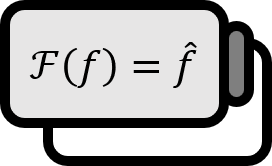コンボリューションのサポート
定理
実数の二つの集合 $A, B$に対して、$A + B$を次のように定義しよう。
$$A + B := \left\{ a + b : \forall a \in A, \forall b \in \supp B \right\}$$
二つの関数 $f, g$に対して以下が成立する。
$$\supp f \ast g \subset \supp f + \supp g$$
ここで、$\supp$は関数のサポートであり、$\ast$はコンボリューションである。
証明1
$x \notin \supp f + \supp g$と仮定しよう。するとどんな$y$を選んでも$f(y)g(x-y)=0$となる。
ケース 1 $y \in \supp f$
この場合、$x - y \notin \supp g$となる。もし$x - y \in \supp g$と仮定するならば、
$$ \supp f + \supp g \ni (x - y) + y = x \notin \supp f + \supp g $$
これは矛盾を導く。従って $x - y \notin \supp g$であり、$g(x-y) = 0$である。
ケース 2 $y \notin \supp f$
この場合、$f(y) = 0$である。
よって、$x \notin \supp f + \supp g$であれば、$\displaystyle \int f(y)g(x - y) dy = f \ast g(x) = 0$となり、$x \notin \supp f \ast g$となる。従って、
$$ \supp f \ast g \subset \supp f + \supp g $$
■
